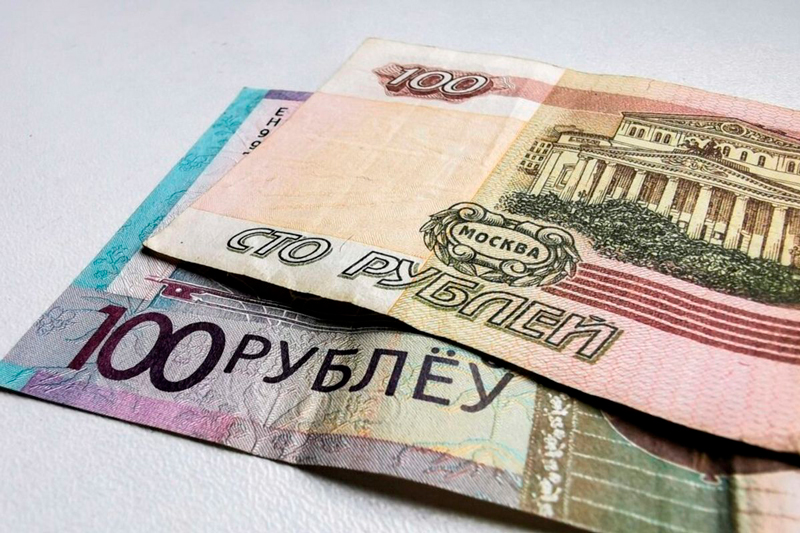Removing the green patina from the ruble
The ongoing external pressure on Belarus and Russia forced the countries to switch to mutual settlements in national currencies. This step made allowed to avoid the dependence of exchange rate fluctuations of the dollar and the euro, as well as to minimize speculation in the currency markets. Experts are sure that the US dollar which undermined its credibility will soon be out of circulation. All this leads to the need to create a supranational form of money that, at best, serves international trade in the entire EAEU. At the dawn of the formation of the Union State, Belarus and Russia were working on the issue of creating a single currency and expressed their respective positions on this matter. We discussed how this process is progressing now and what it will give to the countries with BISR analyst Vitaly Demirov.

Partner model
To begin with, a little digression into the history of the issue. Russia's position on the formation of a monetary union between Belarus and Russia focused on the fact that the Central Bank of the Russian Federation should be a single issuing center. Consequently, monetary policy, in their opinion, should be the prerogative of the Bank of Russia due to the disparity in the size and structure of the two economies. The position of Belarus focused on an equal union with the preservation of the sovereignty of the two countries and the creation of supranational union bodies with reference to monetary integration. This means the equal status of the National Bank of the Republic of Belarus and the Central Bank of the Russian Federation with the delegation of the functions of a single issuing center to the Interbank Monetary Council. During his meeting with the Chairman of the Central Bank Elvira Nabiullina, the President of Belarus noted that introducing a single currency with Russia is not the issue of today. This position of Alexander Lukashenko is also confirmed at the expert level. Given the outcomes of previous discussions and current realities, experts emphasize that at the moment the key priority is to focus on the partner model of the international monetary settlement system.
— If earlier experts called differences in the economic model, structure and volumes of our economies an obstacle for such a partner form of the monetary system, today there is a certain convergence associated primarily with changes in Russia itself,” - BISR analyst Vitaly Demirov says. “So, despite the positive influence of Russian private-owned enterprises on the parallel imports dynamics, the systemic role of state corporations and the influence of the state on the economy in Russia is growing. In addition, renouncing the raw-resource development model was not just announced by Vladimir Putin and Mikhail Mishustin, but is also being implemented in practice in the context of implementing union programs and building technological sovereignty.
The analyst is sure that it is the predominance of raw materials in the structure of foreign trade, the prices of which are determined on the world market, that makes the EAEU economies more vulnerable to the dynamics of the external environment and less interested in introducing a partner model of the currency system, and even more so the single currency. This vulnerability leads to price instability and significant differentiation between the EAEU countries in the rate of inflation, as well as to the mutual volatility of national currency rates, which remains high in the long term.
— It is possible to overcome the difficulties associated with vulnerability to the dynamics of the external environment, the difference in inflation rates and exchange rate volatility only by moving away from the raw material model of development and building the so-called optimal currency zone,” - Vitaly Demirov emphasized.
Best option
It is worth noting that, unlike the single currency, the optimal currency zone involves establishing a rigidly fixed bilateral exchange rate — in our case, between the Russian and Belarusian ruble. Although a fixed exchange rate can also lead to problems with reduced competitiveness and increased costs for certain sectors of industry, if there is a change in exchange rates on world markets, exchange rate stability can increase the inflow of investment into industry and support the modernization of technologies and production processes, as it eliminates the risk of losses from currency instability.
— To overcome the possible negative effects of a fixed bilateral exchange rate, it is necessary to increase the production factors mobility, acting as a corrective mechanism instead of a floating exchange rate, or to move towards convergence according to the economies diversification criterion,” - the BISR analyst believes. “This will allow to quickly smooth out external shocks without having to resort to the exchange rate to correct distortions in the payments balance. If diversification is supplemented with a similar production structure, the probability of the impact of asymmetric shocks on the participants of the monetary union will decrease. As a result, a floating exchange rate for countries with a similar production structure is less necessary to counteract asymmetric shocks.
The expert notes that apart from general structural problems, despite a significant increase in the volume of trade in national currencies, at the moment most national financial markets are characterized by low capacity and liquidity, as well as in some cases the absence of important segments to effectively support the strengthening of the role of national currencies:
First of all, we are talking about the mechanisms of hedging currency risks. The derivatives market on which they can be implemented exists only in Russia, Armenia and Kazakhstan. At the same time, even these countries have no tools that enable hedging the EAEU currencies exchange risks without using another reserve currency as an intermediate one. For example, in the relatively large market of fixed-term currency transactions in Russia, almost all turnover falls on futures for the US dollar and euro, and there are completely no futures and option contracts for the EAEU currencies. In the small futures market of Armenia, only dollar futures are in circulation, but there are single transactions on it.

Tasks for Eurasian Five
One thing must be clear: despite the fact that all the EAEU countries have a currency spot market, trading in currency pairs of the Union countries occupies an insignificant share in it. The main reason is the high transaction costs, predetermined by the extremely low demand for the EAEU currencies, even in neighboring countries. As a rule, economic agents prefer to use reserve currencies for settlements and investments, since it is more profitable to transfer through them from one "soft" currency to another.
— The use of "soft" currencies for investment is ineffective in the vast majority of cases, since the volatility of their exchange rates is traditionally much higher than that of reserve currencies, and there are no reliable financial instruments expressed in them. The spread on reserve currencies tends to zero, and their effective performance of the value preservation function stimulates investment demand for financial instruments denominated in these currencies,- Vitaly Demirov drew attention.
According to the expert, it is extremely important to increase the role of the national currencies of the EAEU to provide inter-state loans in them.
— In general, state transfers account for a significant share in cross-border payments of the EAEU. At the same time, the provision of inter-state loans in national currencies as a separate case of these transfers is small. The deterrence of such loans is caused by the fact that export contracts are fixed in dollars. And the main risk for the Russian state loan in rubles arises here only when it is issued at the expense of assets denominated in dollars. In other cases, there are no risks,” – the analyst added.
Speaking about the proposals, Vitaly Demirov emphasized that
Creating an EAEU regional payment system could be an effective medium-term measure in the field of monetary and monetary policy coordination.
This will contribute to expanding the use of national currencies in mutual trade and reduce the costs associated with operations on the foreign exchange market.
— In addition, a medium-term measure may also be the creation of a tool for monitoring the dynamics of the movement of exchange rates of the national currency in comparison with the average for the EAEU and obtaining information on the relative competitiveness of exports. A similar instrument can be a settlement regional monetary unit, as well as indicators of deviation from it of the national currency and the degree of convergence of these indicators,” - the BISR analyst said. -The use of a settlement monetary unit will determine the prospects for a transition in the long term to the coordination of monetary policies, similar to the European mechanism of exchange rates, in the form of a common basket of currencies with a given range of fluctuations relative to it, or consider the possibility of creating a supranational monetary unit — the "transferable digital ruble of the EAEU", which allows to achieve significant harmonization of key macroeconomic parameters without the need to stop circulation national monetary units or a significant limitation of the capabilities of the national monetary policy management.

